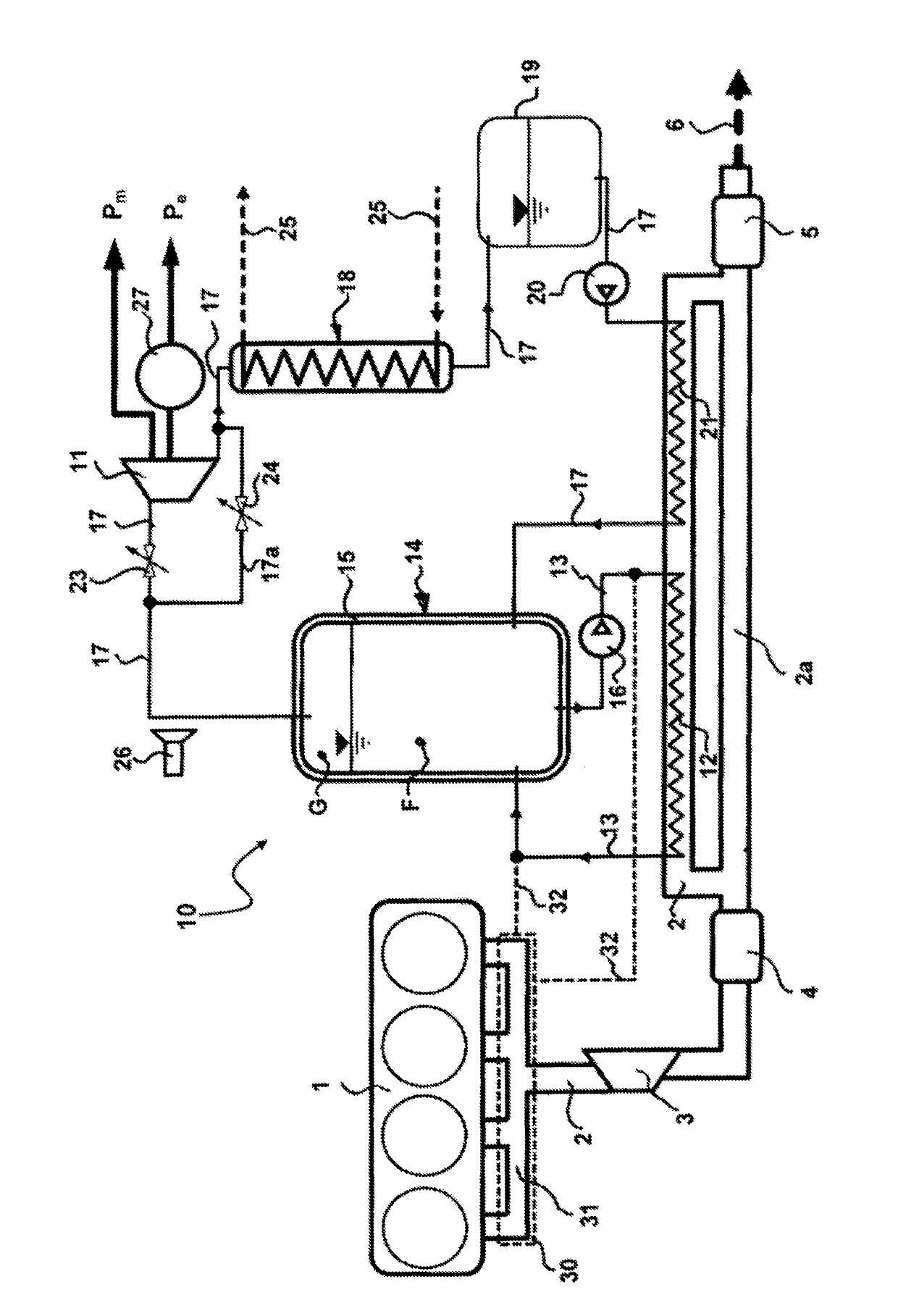Method for recovering heat from internal combustion engines and for converting the recovered heat into mechanical energy
a technology of internal combustion engine and heat recovery, which is applied in the direction of machines/engines, engine components, steam engine plants, etc., can solve the problems of large variation in the useable waste heat of internal combustion engine, unsteady heat flow, and inability to realize technology in practice, so as to reduce the heat loss to the surrounding environment
- Summary
- Abstract
- Description
- Claims
- Application Information
AI Technical Summary
Benefits of technology
Problems solved by technology
Method used
Image
Examples
Embodiment Construction
[0057]The drawing reproduces, in a schematic illustration, an internal combustion engine 1 of a motor vehicle (otherwise not shown), for example a passenger vehicle or a lorry, which has an exhaust pipe 2 in which the exhaust gas flow serving as the waste heat flow is removed from the internal combustion engine 1. The exhaust pipe 2 leads, for example, into a turbocharger 3 and into a catalytic convertor 4, which is arranged downstream of the latter, for the catalytic purification of the exhaust gas, and the exhaust gas flow downstream of the latter passes through an end silencer 5 and is removed into the surroundings via an exhaust 6.
[0058]A device, which is provided overall with the reference sign 10, for recovering heat from the internal combustion engine 1 and for converting the recovered heat into mechanical energy by means of an expansion machine 11 designed, for example, in the manner of a turbomachine or positive displacement machine, contains a heat accumulator fluid, for e...
PUM
 Login to View More
Login to View More Abstract
Description
Claims
Application Information
 Login to View More
Login to View More - R&D
- Intellectual Property
- Life Sciences
- Materials
- Tech Scout
- Unparalleled Data Quality
- Higher Quality Content
- 60% Fewer Hallucinations
Browse by: Latest US Patents, China's latest patents, Technical Efficacy Thesaurus, Application Domain, Technology Topic, Popular Technical Reports.
© 2025 PatSnap. All rights reserved.Legal|Privacy policy|Modern Slavery Act Transparency Statement|Sitemap|About US| Contact US: help@patsnap.com

